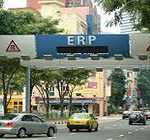Visualise an Indian city where every home is connected to electricity, gas, water and the internet via a smart grid, transport systems are controlled via central command centres, and the population is linked to each other and to civic facilities in real time. This is a vision of a smart city – one that PM Modi aims to create in the hundreds – in line with what Singapore has executed.
There is a growing realisation that turning cities around and releasing their dynamism is critical to India’s economic growth. Unlike many countries that are grappling with ageing populations, India has a young population projected to touch 600 million by 2025 – equal to the combined total population of the U.S., Russia and Japan. However, accommodating them is a challenge. The country needs about 500 new cities to cope with the huge influx of population from rural or semi-rural areas to urban centres.
However, the speed of urbanisation poses a managerial and policy challenge – one that has been managed so far by expanding existing urban spaces and converting rural areas into urban. However, this has thrown up new challenges – crumbling physical and social infrastructure, inadequate transportation, rising pollution levels and encroachments, to name a few. Planned cities like Navi Mumbai, Chandigarh and Gandhinagar have been successful, but only to a limited extent as they face a daunting shortfall of funds for improving and maintaining basic infrastructure.
Aware of the limited availability of time and finances, the government has focused attention on developing smart cities – a trend followed globally to achieve sustainable urbanisation. Across Asia are some of the most successful examples like Singapore, Songdo(Korea), Binhai and Pudong(China), and Yokohoma and Toyota(Japan). Of these, Singapore has been the most successful in implementing a smart city infrastructure based on a high density and high liveability development model.In this context the recent string of high-profile visits by four Indian chief ministers to Singapore assumes significance. India is exploring the prospect of a partnership, along the lines of the Sino-Singapore Tianjin Eco-city model, to build its 100 smart cities.
Singapore has been able to overcome many challenges like limited size and resources by using the most advanced information and communication technology (ICT) solutions to enable efficient transportation, adequate public housing, energy management and water treatment. Its transformation from a congested city to a thriving smart city has been breathtaking and offers great lessons for India.
*Singapore has the highest home ownership rates in Asia -nearly 90.5%- ranking third globally. It also has one of the lowest vehicle ownership rates in the continent – less than 20%, and this has been made possible due to an efficient public transportation system
*The presence of a strong policy and regulatory framework regarding city development. Four bodies – Singapore Land Authority, Building Construction Authority (BCA), Urban Redevelopment Authority (URA) and the Infocomm Development Authority assist in guiding the city-state’s growth
*Singapore benefits from its location next to Malacca Strait, the busiest shipping lane in the world, as well as from the presence of the two fastest growing economies in its neighbourhood – Malaysia and Indonesia. It has close ties with neighboring countries as well as friendly visa policies – two factors that have attracted a skilled workforce
*It has set targets for air quality and climate change, water, nature conservation, and public health.
Not everything in Singapore’s success story can be replicated, or will work in India. However, some can be applied here.
To start with, the government must enact a new policy framework for developing existing cities into smart cities, and issue clear guidelines on what makes for a smart city based on five infrastructure requirements – the management of energy, water, transport and traffic, security and solid waste. The government must also set up a dedicated agency, in the lines of Infocomm Development Authority, Singapore, to develop solutions and implement them in coordination with state governments, private players, investors and civic bodies. This is essential because so far few of them have shown interest in developing smart cities in India. The government must also speed up urban transportation initiatives introducing different types of transport links that will enable people to travel long distances to work in a quick and efficient manner. Like Singapore, India must look at working in close cooperation with neighbours and frame visa policies that will ease the entry of skilled labour. The Modi government has made a good start by reaching out to long neglected neighbors like Nepal and Bhutan, but these must be followed up on.
Dr. Ram Rakkappan is an independent analyst on politics and public policy. He is also a Senior Manager at the India office of Gerson Lehrman Group Inc, and a recipient of Wiscomp Scholar of Peace fellowship and Hansen International Fellowship on International Cooperation
This blog was exclusively written for Gateway House: Indian Council on Global Relations. You can read more exclusive content here.
For interview requests with the author, or for permission to republish, please contact outreach@gatewayhouse.in.
© Copyright 2014 Gateway House: Indian Council on Global Relations. All rights reserved. Any unauthorized copying or reproduction is strictly prohibited


